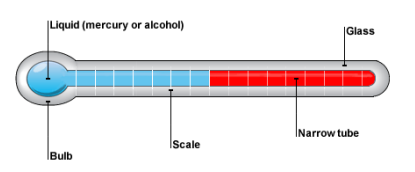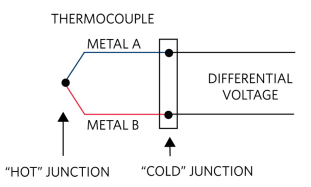Changes in Thermal Energy (GCSE Physics)
Changes in Thermal Energy
Changing the Temperature
When we raise the temperature of a system, different factors will affect the increase in temperature. They include the following:
- Mass of the substance heated – as the mass of the substance increases, the number of particles in the substance increases. This means that there are a larger number of particles to heat, therefore making it more difficult to heat.
- Type of material – certain materials are easier to heat than others. For example, we can look at conductors and insulators; conductors are fairly easy to heat, whilst insulators are difficult to heat up.
- Energy input – as the amount of energy input increases, it is easier to heat a substance. This is because we simply have more energy available in the system, which can be converted into kinetic energy, potential energy and thermal energy.
Calculating Temperature Changes
Formula for Change in Thermal Energy
We can calculate the change in thermal energy using the following formula.


Where:
- change in thermal energy, ∆E, in joules, J
- mass, m, in kilograms, kg
- specific heat capacity, c, in joules per kilogram per degree Celsius, J/ kg °C
- temperature change, ∆T, in degrees Celsius, °C
Specific Heat Capacity
We previously covered this section in Chapter 1 Energy. For completeness, we are going to recap the definition here:
The specific heat capacity of a substance is the amount of energy required to raise the temperature of one kilogram of the substance by one degree Celsius.
Measuring Temperature Change
A thermometer has to be calibrated by measuring the physical properties of a substance when it is heated at well defined fixed points. For example the volume (and density) and electrical resistance of a substance.
Water has a melting point of ice at 0 °c, which is the lower fixed point. It also has a boiling point of pure water at 100 °c, which is the upper fixed point.
Measuring another property, such as electrical resistance, at these two points allows you to work out the values of that property at any other temperatures.
Liquid-in-glass Thermometers
A liquid-in-glass thermometer is made of a thin glass capillary tube containing a liquid. As the temperature rises or falls, the liquid inside will expand or contract respectively.
When heated, the liquid expands upwards from the glass bulb towards the narrower tube.
Therefore the amount of expansion or contraction (length of the liquid) can be measured against a linear scale to work out the temperature of a substance.

Sensitivity, Range and Linearity
- Sensitivity – the change in length of the liquid per change in temperature.
- Range – the difference between the minimum and maximum temperature a thermometer can read.
- Linearity – properties which change at a steady rate in relation to temperature are linear
Thermocouples
A thermocouple is made of two different metal wires attached together.
At the point of attachment, the wires are heated causing a small voltage. This allows a current to flow through the wires.
A higher temperature will produce a greater potential difference.

They are used to measure high, rapidly changing temperatures, since metals have high melting points. However they are not as sensitive liquid thermometers.
Celcius and Kelvin Scales
So far we’ve only used the Celsius scale, where the units are degrees Celsius.
The lowest possible temperature on the Celsius scale is -273°c, otherwise known as absolute zero. At this temperature, all the particles in a substance stop moving as they have no energy left to lose.
However, there is another scale you need to know for Physics. This is the Kelvin scale, measured in kelvin (K).
The Kelvin scale begins at -273 °c or absolute zero. Therefore -273 °c is equal to 0 K, meaning there are no negative numbers on the scale. This makes calculations involving very low temperatures much easier.

The temperature of a substance in kelvin is proportional to the average kinetic energy of the molecules in that substance.
For instance, the particles in a gas sample at 150 K will have double the average kinetic energy as the particles in a gas sample at 75 K.





Still got a question? Leave a comment
Leave a comment